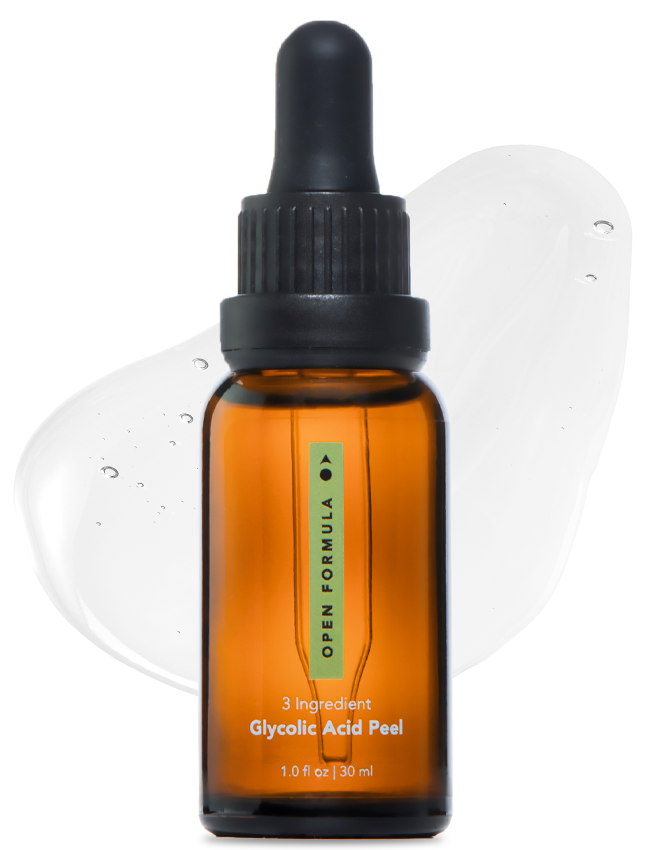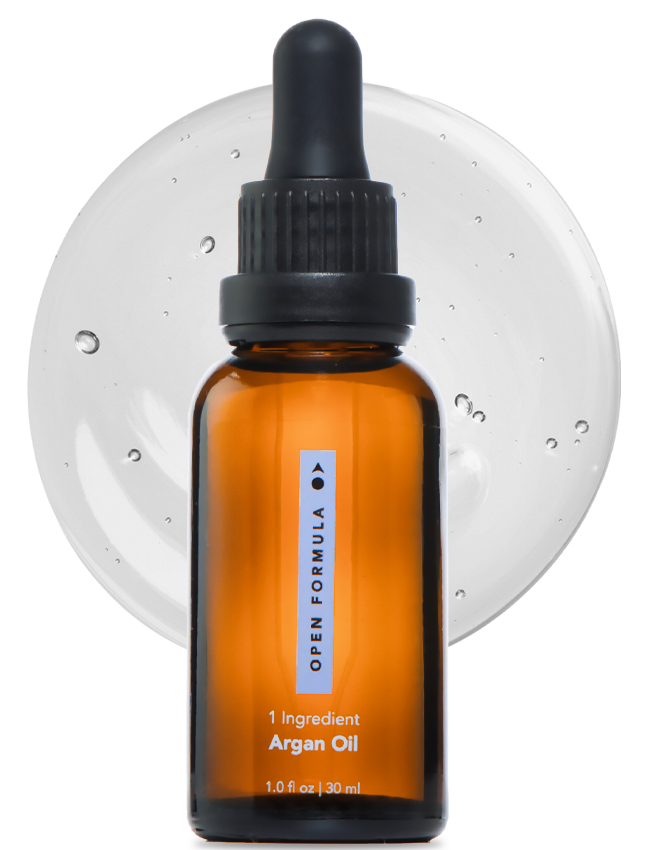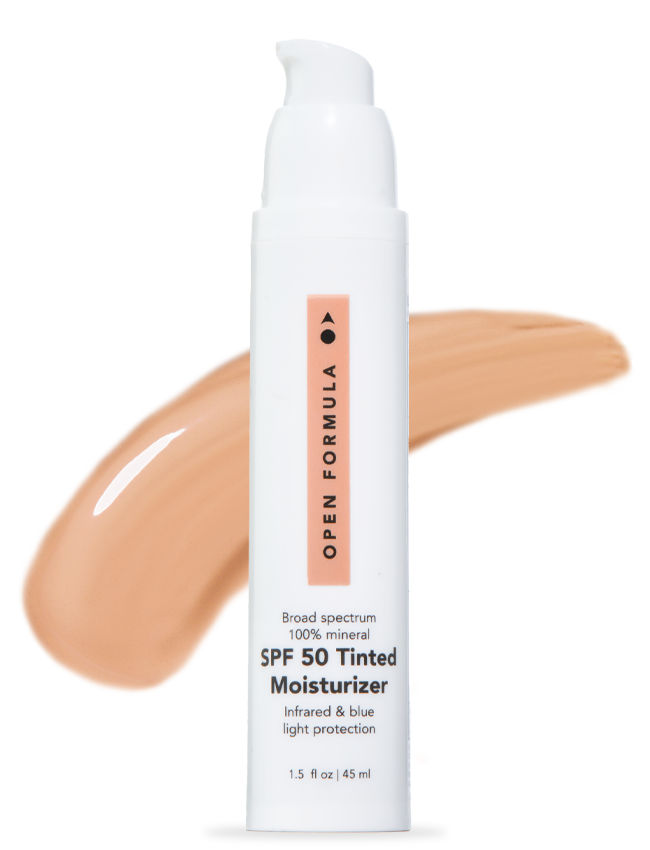Clean beauty movement: is it just marketing or fluff? In the past few years, the clean beauty trend has grown. But a lot of people are left scratching their heads about what the “clean beauty” movement really means.
Online retailers have categories dedicated to the clean beauty movement. But is 'clean' skincare actually better than clinically-formulated products?
At the end of the day, no matter their origin, skincare products should be held to one standard: Do They Produce Visible Results.
Do they contain the right ingredients for the results you want? We’re buying skincare because we’re looking for certain outcomes, after all!
It's debatable whether these clean skincare products are truly better than their clinical counterparts. When it comes to skincare, concentrated active ingredients get results. Clean beauty companies don't normally take this approach—they tend to focus on leaving things out of products, rather than adding the good stuff in.
What is Clean Skincare?
What clean beauty really means is hard to define because it’s not a regulated term. Without a universally agreed on meaning of ‘clean beauty’, it makes the whole clean beauty movement not as valid and reliable as ‘regular’ skincare.
This means any brand can claim that they’re a clean beauty brand because there isn’t a standard that they can be held to, and there are no consequences for failing to meet the standard in the first place. Any brand can claim that they’re ‘clean’, but this phrasing also implies that other products are ‘dirty’. But what are regular skincare brands supposedly ‘dirty’ with?
There's usually an overlap of wanting sustainably-sourced ingredients, eco-friendly packaging, and production, plus avoidance of ingredients labeled as harmful. There's one question though—are these ingredients as harmful as clean brands say they are?
The Big Question: Are ‘Clean’ Beauty Products Really Better?
Online retailers and clean beauty companies proudly proclaim that their products are free of ingredients that secretly harm our skin and health. The unfortunate truth is, a lot of these dangers are completely exaggerated and based on bad science. We’re going to bust myths about some of the three most common ‘bad’ ingredients according to clean beauty brands:
3 Clean Beauty Myths Busted
- Parabens
Parabens are a controversial ingredient all because of just one study that found parabens in breast cancer tissue. However, this study had major flaws. It didn't compare the tissue to normal healthy tissue, and it didn't really create any link between parabens and breast cancer in the first place. In fact, to date, there have been no scientific studies that prove, without a doubt, a link between parabens and cancer.
The Good About Parabens
The truth parabens exist as really well-researched preservative. They have a research track record of about 100 years, so we know pretty much every single way they act on the body (and they don’t do much). Plus, they also naturally occur in blueberries, and yet no one boycotts blueberries?!
Preservatives are important in skincare because they prevent the growth of any unwanted bacteria that can spoil skincare and make it basically unusable. Without preserves in skincare, we’d constantly be throwing things out before they were used up! Or worse, we’d be getting infections from the bacteria inside.
- Sulfates
Sulfates, specifically Sodium Lauryl Sulfate (SLS), is also a controversial ingredient. At best, claims are that it's too irritating for the skin, and at worst, it's that SLS causes cancer. SLS is what's known as a surfactant, an ingredient that helps products to foam up in that wonderfully satisfying way. Find it added to products like face wash, toothpaste, and shampoo for a super lathering effect.
Because sulfates are in many products, alarm bells started ringing when they became the week's clean beauty movement target. But the truth is, it's actually totally safe to use.
- Silicone
Silicones pop up in both makeup and skin care, but for different reasons. In makeup, they help to blur skin texture slightly and provide a great base for foundation. In skincare, they’re a great oil-free moisturizer, plus they help products feel smooth and satisfying to use.
The myth about silicones is they ‘trap’ dirt and other harmful molecules to the skin, causing breakouts. Supposedly, they also stop our skin from ‘breathing’. There are two major flaws with this logic.
First, silicones don’t trap anything to skin other than moisture.
Silicones are extremely effective at water loss from the skin so it doesn’t dry out. Secondly, skin doesn’t need to ‘breathe’. If we could breathe through our skin, hand sanitizer would make us drunk! Letting skin (and nails) breath is a common idea that many natural and clean beauty brands focus on, but the truth is it just sounds nice in marketing!
It’s All About The Ingredients
There's one important thing to remember about skincare—it's not one-size-fits-all. Everyone's skin is individual, and what breaks someone else out isn't going to break you out. Clean beauty companies excluding entire categories of ingredients for all just because of one possible breakout is again, bad logic. It’s a bit like saying no one can have chocolate because some people are lactose intolerant—it’s unfair and doesn’t really solve anything.
The bottom line with skincare—no matter how it’s marketed—is that it needs to be formulated to work and be safe. This means skincare should have the right ingredients at the right concentrations, but do clean beauty brands prioritize this?
Arguably, the clean beauty marketing movement is just focusing on what’s trendy to make a quick buck.
You, as the savvy consumer, know better and rely on brands that create skincare that produces visible results and is safe. Like skincare that has the proven ingredients, at the right concentration. Like vitamin C, lactic acid, retinoids, and glycolic acid, to name a few. They're ingredients that provide measurable results to the skin in a drama-free, clinically-formulated way. No trends or gimmicks.






























